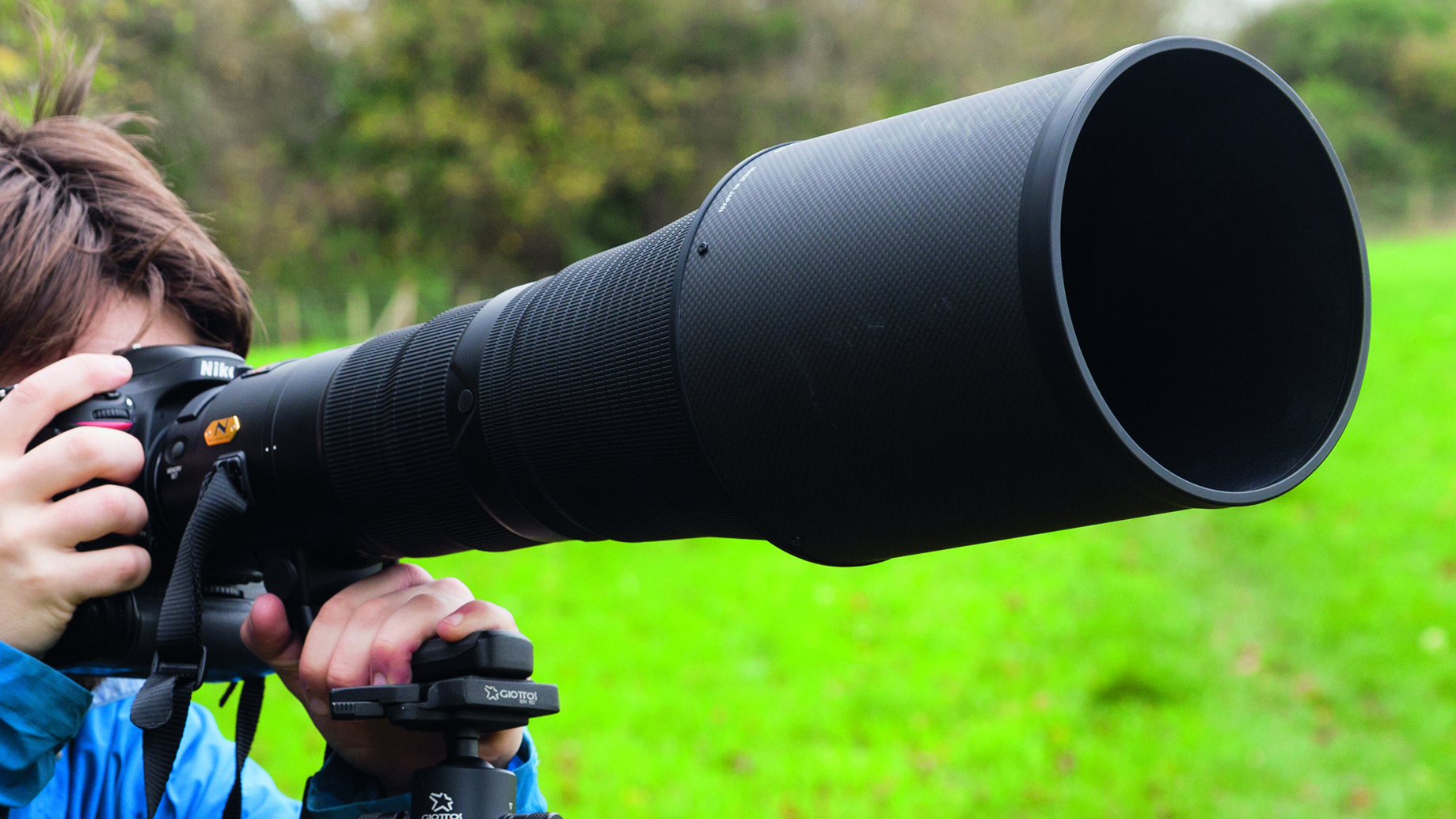Nikon Z8 vs D850: latest mirrorless powerhouse takes on DSLR legend
Some consider the Nikon Z8 the true replacement for the Nikon D850, but how do they really compare?
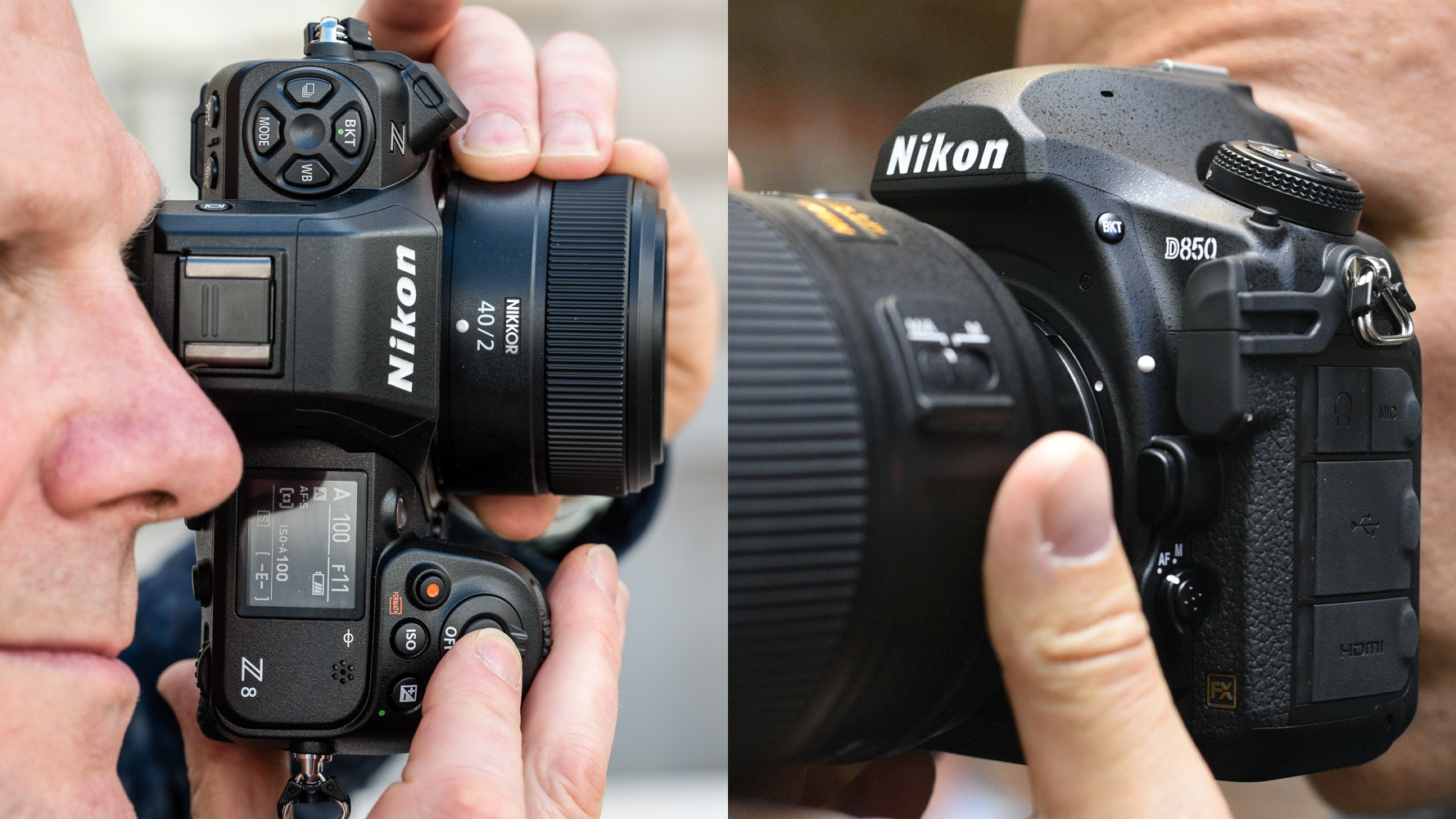
Thanks to its high resolution and speed, the Nikon D850 was a big hit when it launched in August 2017, and many photographers still love it it. It also has a robust, weather-sealed build but is smaller and lighter than the D5 and D6 above it in Nikon's DSLR line-up.
Although camera manufacturers are switching to mirrorless technology, many Nikon D850 users have been waiting for the right model to replace their trusty SLR. The new Nikon Z8, which has much of the same technology and features as the Z9, looks like a great option.
This post compares the Nikon Z8 and the D850 to identify their key differences.
1. Sensor
Nikon Z8: Full-frame (FX 35.9 x 23.9mm) 45.7MP stacked backside illuminated (BSI)
Nikon D850: Full-frame (FX 35.9 x 23.9mm) 45.7MP backside illuminated (BSI)
The Nikon Z8 and Nikon D850 have the same pixel count, but the Z8's sensor uses much newer technology and has a stacked CMOS design. This chip means the Z8 has faster data readout, and that combined with the new Expeed 7 processing engine, contributes to the overall performance, particularly the nippy focusing and subject detection.
Although the D850 has the older Expeed 5 processing engine, the camera has the same native sensitivity range as the Z8 (ISO 64-25,600). However, the updated sensor design and noise reduction algorithms mean that the Z8 should produce better results in low-light.
2. Lens mount
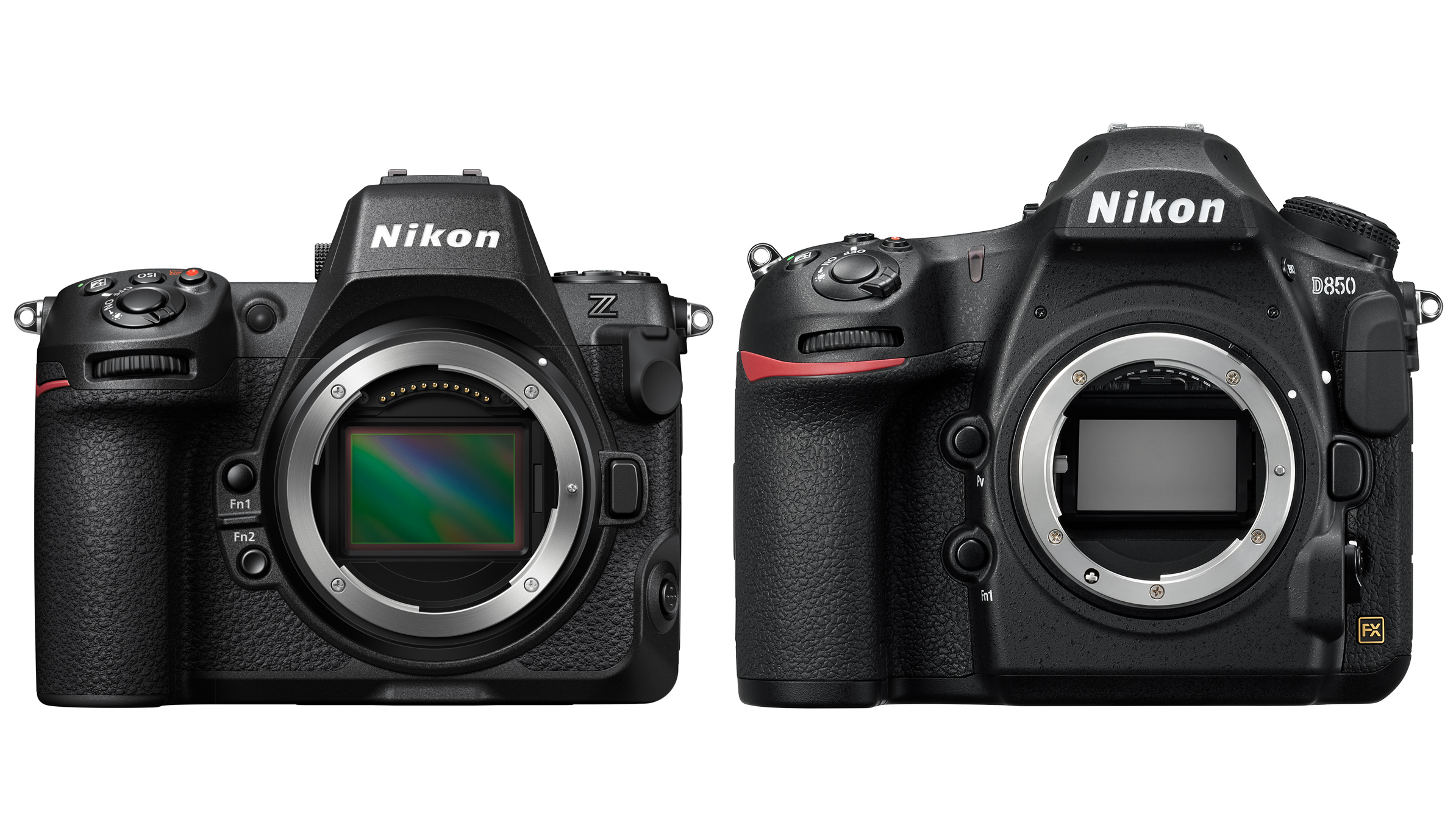
Nikon Z8: Nikon Z
Nikon D850: Nikon F
As the D850 is a DSLR and the Z8 is a mirrorless camera, they have different lens mounts. Thankfully, Nikon D850 users can use an FTZ adapter to use their Nikon F-mount lenses on the Z8, which has the Z mount.
The Nikon Z mount has a diameter of 55mm, 8mm bigger than the F mount. This means it can let in more light and Nikon's engineers have greater scope with lens design. There's also faster communication between the lens and the camera body with the Z mount, and that's useful for fast focusing and image stabilization.
3. Video
Nikon Z8: 8K (7680 x 4320): 60p/30p/25p/24p, 4K (3840 x 2160): 120p/100p/60p/50p/30p/25p/24p, Full HD (1920 x 1080): 120p/100p/60p/50p/30p/25p/24p
Nikon D850: 4K/UHD (3,840 x 2160) video at up to 30p
The Nikon Z8 can record 8K video at up to 60p while the Nikon D850 has a maximum resolution of 4K (3,840 x 2160) at 30p (25p and 24p are also available). In many situations, 8K video is overkill, but it's likely to become more prevalent and brings scope to crop to 4K.
In addition, the Z8 can record 4K video at up to 120p, while the D850 is limited to 30p in 4K and 90p in Full HD (1920 x 1080) or there's a 4x / 5x slow-motion Full HD movie option. It means the Z8 is much more helpful for creating slow-motion videos.
The Z8 also has the option to shoot in Nikon's N-Raw format N-RAW (12 bit), Apple ProRes RAW HQ (12 bit), or Apple ProRes 422 HQ (10 bit).
Both cameras have an HDMI connection that can be used to connect an external recorder. This enables the D850 to record uncompressed 4:2:2 8-bit 4K footage, while the Z8 can record 8K 4:2:2 10-bit video.
4. Autofocus system
Nikon Z8: 493 phase-detection points plus subject detection
Nikon D850: Viewfinder: 153-point with 99 cross-type phase detection, Live view: contrast detection
Because the D850 is a DSLR, it has two AF systems, one that works when images are composed in the viewfinder and the other for use in Live View and video mode. Their performance is very different, with the phase-detection AF system being fast and accurate even in low light. The contrast detection system that operates in Live View and video mode, however, is slow.
However, as usual, with a full-frame DSLR, the focus points are clustered quite closely around the center of the frame.
Meanwhile, the mirrorless Z8 uses the same hybrid (phase and contrast detection) AF system however the image or video is composed. It also has 493 phase-detection points distributed across the whole imaging frame. This makes it easier to focus on and track subjects at the edge of the frame than with the D850, which has 153 AF points clustered around the center of the frame.
In addition, the Z8 has Subject detection that can be set to look for specific subjects. It can detect people (eyes, faces, head, and torso), animals (whole bodies and heads and eyes for cats, dogs, birds, and 'other animals'), cars, motorbikes, bicycles, trains, and airplanes. It makes shooting moving subjects much easier than with the D850.
5. Continuous shooting
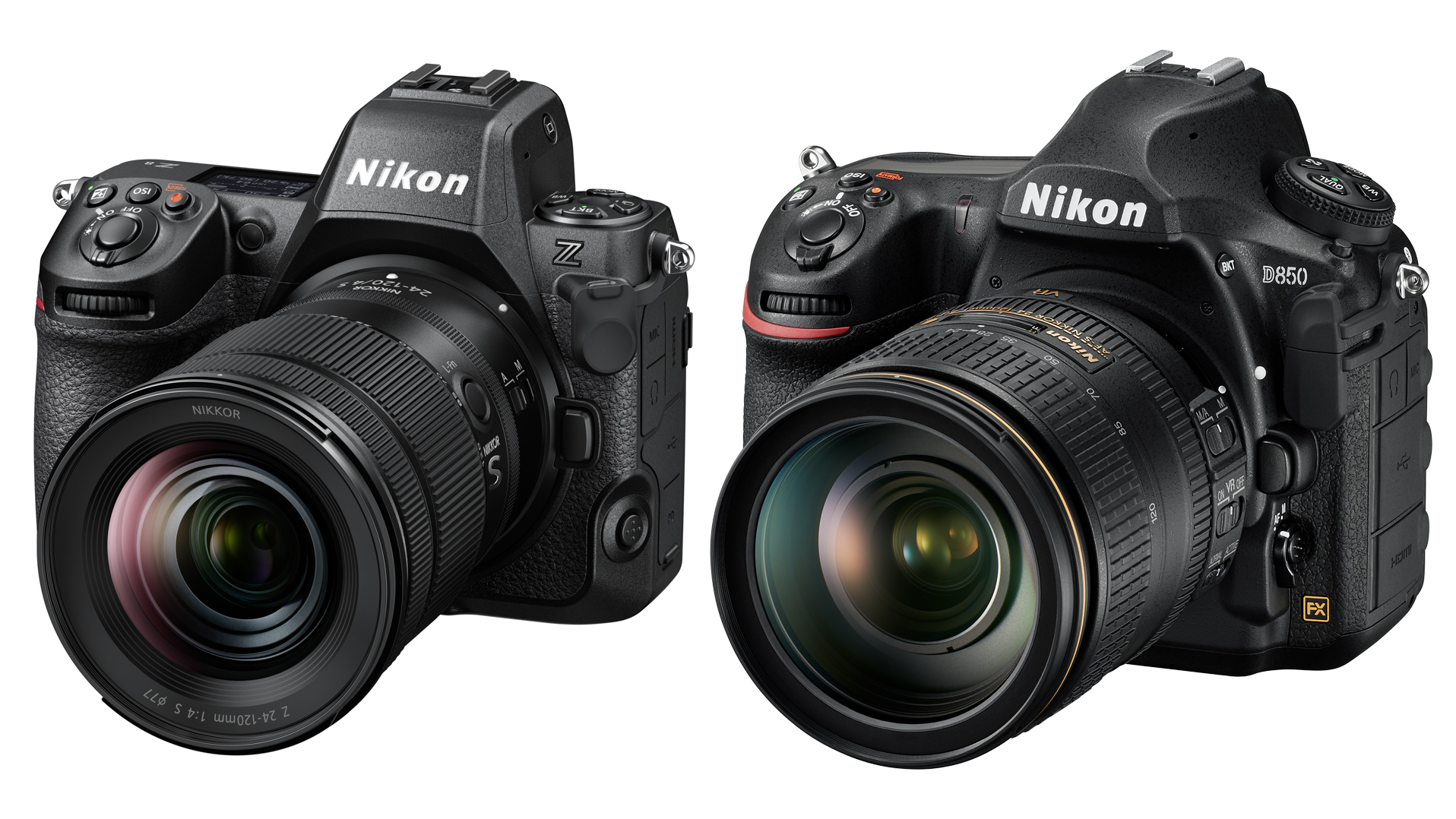
Nikon Z8: 20fps
Nikon D850: 7fps
In 2017, the D850's ability to shoot 45.7MP images at 7 frames per second (fps) was impressive, and it could be boosted to 9fps with the battery grip. Today, however, that seems pedestrian in comparison with some mirrorless cameras, including the Z8, which has a maximum rate of 20fps when capturing full-resolution raw files. It can also hit 30fps when shooting full-resolution JPEGs and 120fps when shooting 11MP normal-quality Jpegs.
The Z8's burst depth also beats the D850's, as the mirrorless camera can record more than 1000 images in one sequence. In comparison, the D850 can shoot at 7/9fps to a maximum of 51 14-bit lossless compressed raw files or 170 12-bit lossless compressed raw files.
Another key difference from the D850, the Z8 doesn't have a mechanical shutter, just an electronic shutter. This enables shutter speeds of up to 1/32,000 sec. The D850 has both types of shutter, and when the electronic shutter is in action in Silent Live View mode, it can capture full-size images at 6fps or DX format (APS-C) images at 30fps.
6. Screen
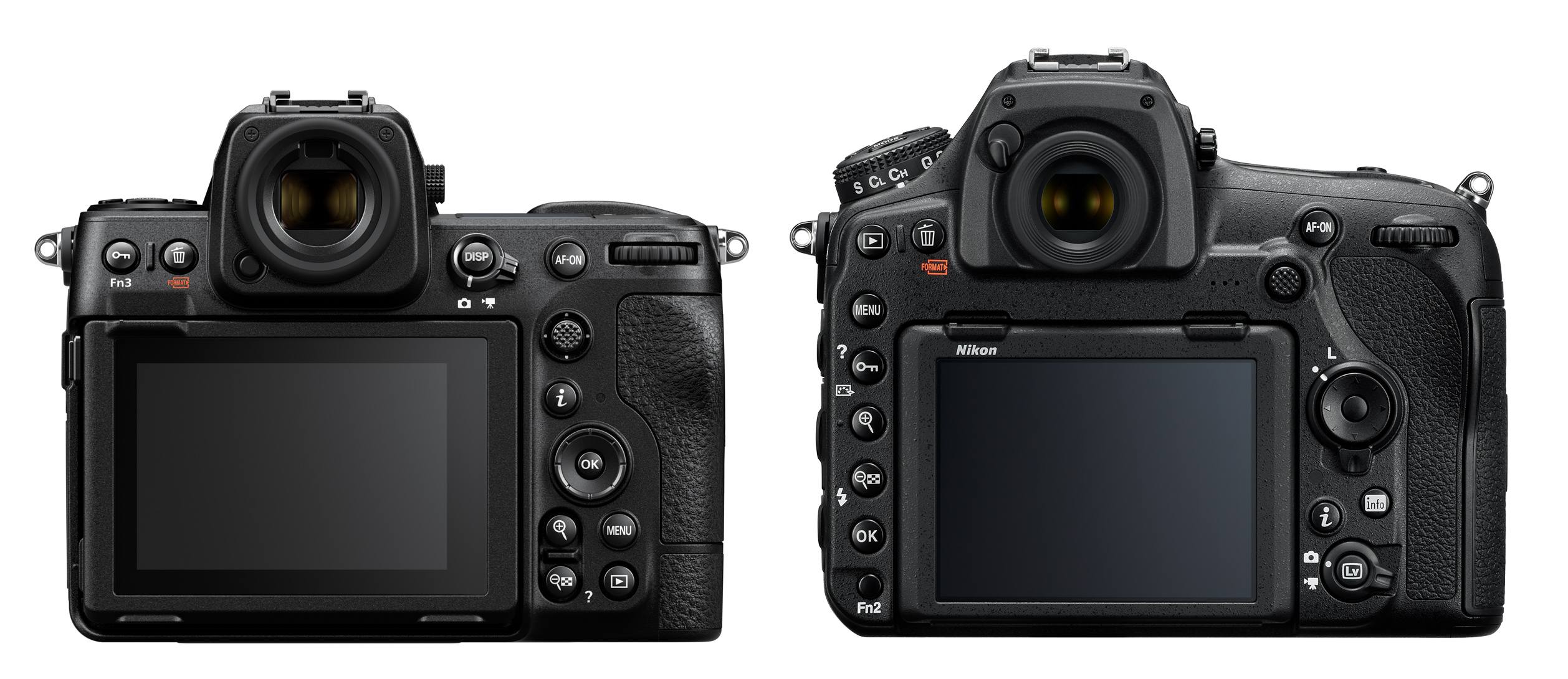
Nikon Z8: 3.2-inch 2,100,000-dot 4-way-tilting touch-screen
Nikon D850: 3.2-inch TFT LCD 2,359,000-dot tilting touch-screen
The D850 has a 3.2-inch 2,359,000-dot screen, but it can only tilt up or down in landscape orientation, so it's no help when photographing in portrait orientation. However, the Z8's 3.2-inch, 2,100,000-dot screen has a 4-way tilting mechanism that can be tilted in landscape or portrait orientation, making it much more helpful.
7. Viewfinder
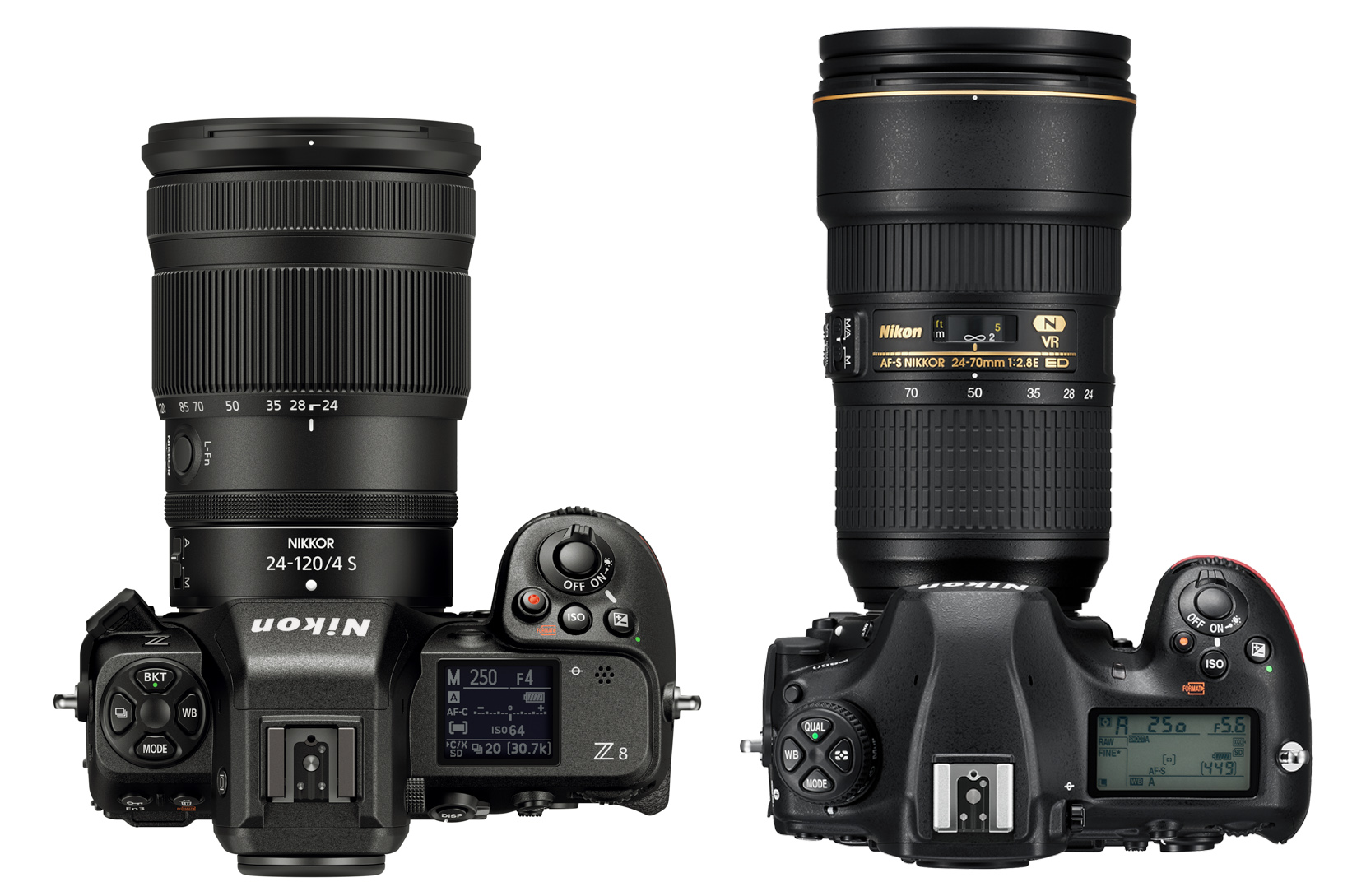
Nikon Z8: 0.5-inch 3.69-million-dot, 3,000-nit OLED viewfinder
Nikon D850: Optical with pentaprism 100% coverage and 0.75 magnification
As a DSLR, the D850 has an optical viewfinder, but the mirrorless Z8 has a 0.5-inch 3.69-million-dot, 3,000-nit OLED electronic viewfinder. Although some people still prefer an optical viewfinder, an electronic finder enables you to preview the impact of camera settings. The Z8's EVF also has dual-stream technology that allows a real-time view with no blackout.
8. Weight
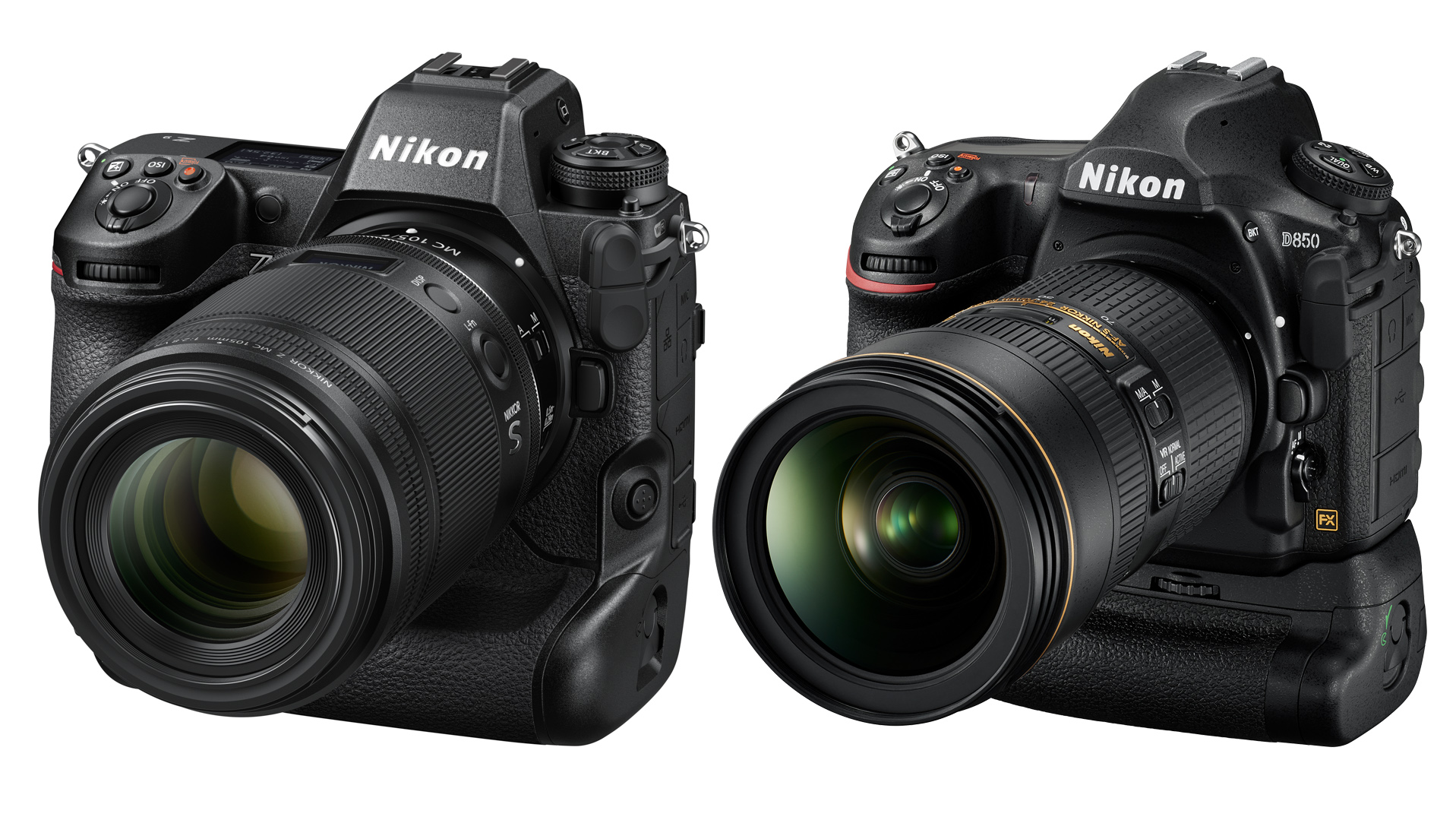
Nikon Z8: 910g with battery and memory card
Nikon D850: 1005g with battery and XQD card
The Nikon Z8 and D850 are both single-gripped cameras, but they can be used with a battery grip if a vertical grip is needed. It's their single-gripped design that makes them smaller and lighter than the models directly above them in Nikon's line-up.
The Z8 is 95g lighter than the D850, which won't make a huge difference when you're carrying a bag full of lenses. It's also 15% smaller than the D850 so it is arguably more portable.
9. Battery life
Nikon Z8: Stills in Energy-saving mode: 340 images using the viewfinder, 370 using the main screen, Standard mode: 330 images using the viewfinder, 340 using the main screen, Video: 85 minutes when using the viewfinder or screen
Nikon D850: Stills: 1840 images using the viewfinder, 70 minutes of video
If you're shooting stills and composing images in the viewfinder, then the Nikon D850 is the clear winner here. You may still want a spare battery for a day's shoot, but it's essential for the Z8.
Interestingly, the Z8 can shoot video for longer on a single battery charge than the D850. This suggests that the D850 will capture fewer images in the Live View mode than the Z8 when using the screen to compose images, but it's not a camera we would use in Live View mode frequently.
10. Nikon Z8 vs D850: Verdict
The Nikon D850 has proved its worth and has been a dependable camera for many enthusiast and professional photographers. It's been popular with many photographers, including those who shoot weddings, landscapes and events. And it remains an excellent camera for those genres. However, the more advanced focusing system, faster shooting rate and deeper burst depth of the Z8 make it a better choice for sport, action or wildlife photography. It's also got some serious video credentials making it a better all-rounder, and much better choice for videography.
11. Prices
Best Nikon Z lenses
Nikon Z8 vs Z9
Nikon D780 vs D850
Best professional cameras
Get the Digital Camera World Newsletter
The best camera deals, reviews, product advice, and unmissable photography news, direct to your inbox!
Angela has been testing camera gear from all the major manufacturers since January 2004 and has been Amateur Photographer’s Technical Editor and Head of Testing for Future Publishing’s photography portfolio (Digital Camera Magazine, PhotoPlus: The Canon Magazine, N-Photo, Practical Photoshop, Photography Week and Professional Photography magazines, as well as the Digital Camera World and TechRadar websites). She is the founder of SheClicks - a community group that encourages and supports female photographers.

